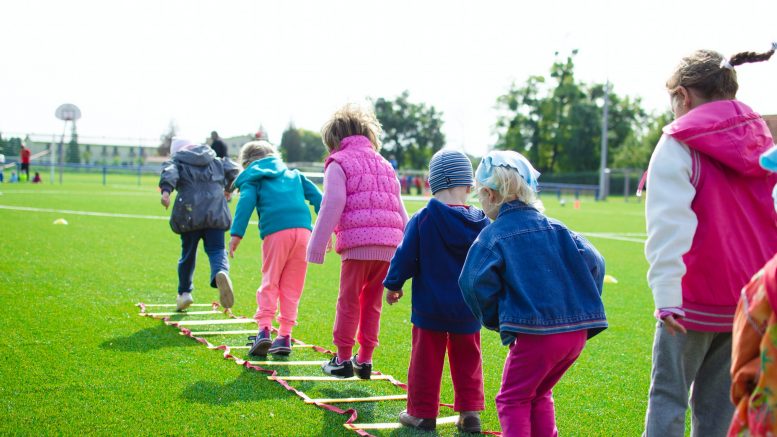The disparity within sport in terms of gender is not a new topic. Over recent years there has been a huge effort to close that gap. Former FA chairman Greg Clarke’s recent comments and the closure of women’s academy football during the second lockdown highlights just how far away we are from true equality: When times are tough, it is women’s sport that is more expendable.
The coronavirus pandemic has been a unique challenge for every team around the country, no matter how large, but it has been of particular detriment to women’s sport. Over the last few years, women’s football has seen massive growth in terms of audience and finances. There is severe danger this growth might come undone.
– Arsenal lead the way as fans return to Emirates Stadium
– Where you can attend sports events as lockdown ends
The effects of any backwards steps are not simply a question of finance, but a moral one too. What effect will this have on the next generation of female sports stars? What damage will this do to gender equality?
Anna Kessel, Women’s Sports Editor at the Telegraph states: “It is the grossest of inequalities to label boys’ football as “elite” and girls’ football as dispensable.”
Throughout recent months the restart dates of men’s major sport have come prior to the women’s equivalents. The Tyrrells Premier 15s restarted in October, whereas the Gallagher Premiership resumed in August. The same is seen in international cricket. The England’s women team first returned in September whilst the men’s team first played again in July.
After the controversial decision to finish the Women’s Super League (WSL) on a points per game basis they restarted their season in September, whilst the Premier League reconvened in June to complete the 2019-20 season.
The earlier restart dates for men’s sport isn’t all that shows inequality. During the second lockdown academy football for boys has been allowed to continue whereas for girls it hasn’t. This is because, for the most part, their academies do not yet meet the required governmental elite protocols (processes to ensure utmost accordance with COVID-19 precautions and guidelines).
Kelly Simmons, director of women’s football at The FA told the BBC: “I understand the anger and frustration, but it’s about the human and financial resources to meet elite protocols.”
The different approach to men’s and women’s sport is a question of funding, something that female sport stars have had to become accustomed to.
I've used some coach time to write my week notes, including some maybe unpopular opinions on whether the women's FA cup games should be played this weekend. https://t.co/aXrnPYiWCb
— Maggie Murphy (@MaggieMrphy) November 8, 2020
Financial support, be it investment from business in the form of sponsorship or bailouts from the government, is an unsure prospect, despite being more vital than ever. Not many are in a position to provide long-term investment so new sponsorship deals are going to be hard to come by, whilst the conversation surrounding government bailout packages are unanimous in their omission of any real detail of how support might be divided between genders, if not entirely focused on flagship male competitions.
Despite what has been called an “invisible Summer” in terms of women’s sports, two million viewers watched the BBC Women’s Football show on the first weekend of its return. This may well be significantly less than shows like Match of the Day, but two million is not a figure to be sniffed at. Anna Kessel, the Telegraph’s women’s sports editor, recently said: “It is the grossest of inequalities to label boys’ football as ‘elite’ and girls’ football as dispensable.”
Manchester United, under the stewardship of Casey Stoney, had finally launched their women’s team for the 2018-19 season and gained promotion to the Super League in their first season.
The arrival of such a global brand to women’s football, albeit much later than possible to avoid criticism (as seen recently from Megan Rapinoe) can only be another signifier of the growing strength of the women’s game, be it in terms of sporting achievements, financial opportunity or gender equality.
The Summer saw a plethora of world-renowned signings arrive in the WSL; a women’s record transfer fee for Pernille Harder to Chelsea, with World Cup winners Rose Lavelle going to Manchester City and Tobin Heath to cross-city rivals United.
Football is not the only area in which growth is clearly visible. Beth Barrett-Wild, head of Women’s cricket competition The Hundred, told The Guardian: “We know women’s cricket is our single biggest area of growth opportunity” when referring to support from the ECB.
Please help us raise awareness of our petition for equal opportunities in the women’s game Over 21000 signatures please help us fight for equality in women’s football https://t.co/mJkrjgNWlz please it takes 10 seconds and help us reach so many more #isitbecauseiamagirl
— philip gill (@philgill2009) November 29, 2020
From within sports organisations, it’s clear that the growth of female teams, competitions and stars are important financially, and morally too. Comments like Clarke’s raise questions over how actionable and honest those intentions really are.
Be it through the less inspiring reasoning of business opportunities, or the more heart-warming initiative of gender equality, the misaligned narrative that we currently are seeing is to no end, detrimental to a bigger purpose than current audience figures. It is of the utmost importance that this issue is voiced and concerned within the highest of echelons, the added bonus of financial possibilities doesn’t currently seem to be enough to convince.
Hackney R.F.C., London Bees, London City Lionesses and Arsenal W.F.C. all declined to comment on the issue.
Words: William Murray | Subbing: Connor O’Halloran

